Korean Traditional Festivals
korean traditional festivals
Korean traditional festivals are some of the exciting features you can experience when visiting this Northern Asian country.
The festival refers to the Korean national as well as localized festivals that are being practiced since the establishment of its people and throughout its history.
Just like most festivals in every culture around the world, Korean traditional festivals are also mainly tied to livelihood, community life, and beliefs.
The most popular and highly-celebrated Korean traditional festivals include "Seollal" (News Year's Day) and "Chuseok" (Harvest Festival) festivals. They are also big holidays in the country.
As a resident of this country, I have witnessed and enjoyed the colorful, vibrant, and exciting and exotic celebrations.
Now, let me innumerate and describe a bit the Korean traditional festivals below. Although some or many of them are not being given much importance these days, they still occupy a place in their traditional lunar calendar.
Seollal (january)
Beginning with the first month of the year, Seollal (or Seolnal) is not only the first most important but also the biggest holiday in South Korea.
Seollal is New Year's Day in the lunar calendar. Koreans celebrate Seollal with various activities and rituals which some sources say it goes back to the sixth century.
One of the must-do activity during Seollal is to show respects to parents and elders in the family, including the ancestors. These forms of respects would usually include the "Sebae" (New Year's Bow) and "Charye" (ritual for ancestors).
During Seollal, Koreans usually wear the traditional clothing called "hanbok" and enjoy "tteoguk" (soup make of glutinous rick cake) and "yakwa" (traditional sweets), and play "Yunnori" (matching the opposites sides of wood sticks).
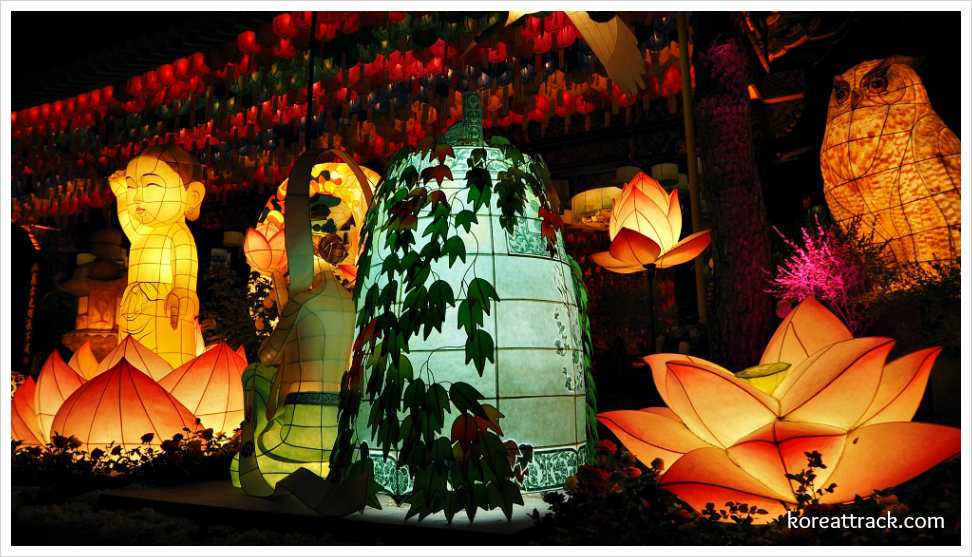 Lanterns at Jogyesa Temple during Buddha's birthday
Lanterns at Jogyesa Temple during Buddha's birthdaydaeboreum festival - 15th january
Daeboreum Festival is being celebrated during the first 'full moon' of the new year. I believe it relates to the lunar farming calendar that signals farmers to prepare or do something on the farm.
Usually, Koreans play games the night before the full moon. Traditionally, farmers burn hays between the rice fields while others play around with cans containing charcoals with fire inside them.
Burning hays could fertilize the soil and fire could drive away pests that eat the plants, including rice. Drinking traditional wine, eating nuts, and praying for a good harvest is part of Daeboreum celebrations.
meoseumnal - second month
Meoseumnal is the first traditional festival being celebrated by Koreans. "Moseum" literally means servants and slaves, and "nal" simply means 'day.'
It is these group of people in the old Korean society that celebrate this day. Usually, the masters permit their servants to celebrate by providing extra food and let them enjoy singing and dancing.
Also, the masters give the servants money to spend for their celebration. Giving this special day was intended to encourage the servants to work better for the farming season.
In some parts of the country, Meoseumnal was celebrated by young servants to celebrate their coming of age. Although this day is still in the calendar, the celebration is no longer in existence after Meoseumnal practice was abolished.
Yongdeungje Festival
Yongdeung means "the god of wind." This day celebrates this 'god' who was believed to have come to Earth on the first day of February and left on the twentieth of the same month.
Yongdeungje is mostly celebrated on Jeju Island and Youngnam District. The purpose of this celebration is not to celebrate the 'wind god's coming but to appease the god who brings strong winds.
Understandably, Jeju Island and Youngnam celebrate this festival because of their geographical locations, which get a lot of strong winds.
Usually, farmers and fisherfolks perform ancestral ritual 'Jesa' to appease the god of wind. Of course, after the ritual eating, drinking, dancing, and other festive expressions follow.
samjinnal festival (3rd day 3rd month)
Samjinnal is being celebrated in March during the early spring season. The numbers 3 and 3 (for March and date) are believed to be lucky numbers.
Since the weather is getting less cold, it is believed that barn swallows come back; insects, snakes, and other living creatures return to life and go back to the open.
People celebrate this day with eating rice cakes, noodles and drink traditional wine such as Dugyeonju or the Azalea wine.
Included in this celebration are exciting activities such as rooster fighting, archery, blooming flowers viewing, fortune-telling, and other games.
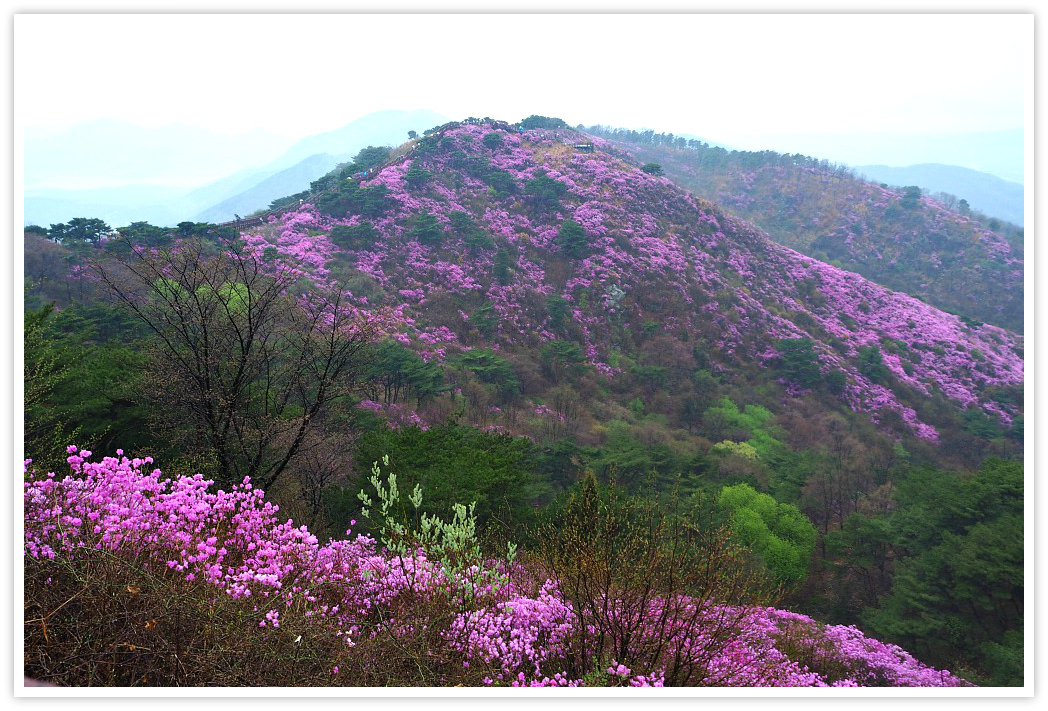 Azalea flowers on Goryeosan Mountain, Ganghwado (Island)
Azalea flowers on Goryeosan Mountain, Ganghwado (Island)hansik festival (4th Month)
Hansik Festival is being celebrated 105 days after the winter solstice. This celebration signals the beginning of the farming period in Korea.
Jesa, the ancestral celebration, is being offered for the Korean deceased ancestors to clean up and maintain their graves.
Another reason for this ritual is to plead for productive and successful farming activities. When celebrating Hansik, Koreans are supposed to eat only cold food, such as Ssuktteok (mugwort cake), Ssukdanja (mugwort dumpling), Ssuktang (mugwort soup), and some side dishes including Kimchi.
Chopail or Buddha's Birthday (8th day 4th month)
Being a country with a long history of Buddhism religion, Chopail or Buddha's Birthday is one of the most festive and highly-celebrated events in the country.
One of the apparent features of this day is the presence of the various and brightly-colored lanterns, especially lotus lanterns. Temples celebrate this day with rituals, prayers, and other festivities.
Traditional, before the day comes, families create lanterns that equal to the number of their family members. Then they light the lanterns and hang them outside their houses.
As mentioned above, most of the lanterns are in the shape of the Lotus flowers, but other Buddhist symbols are also made, such as flowers, fishes, turtles, fruits, among many.
Buddhist believers usually enjoy various food, including Tteok (rice cakes), dumplings, fish cakes, and more.
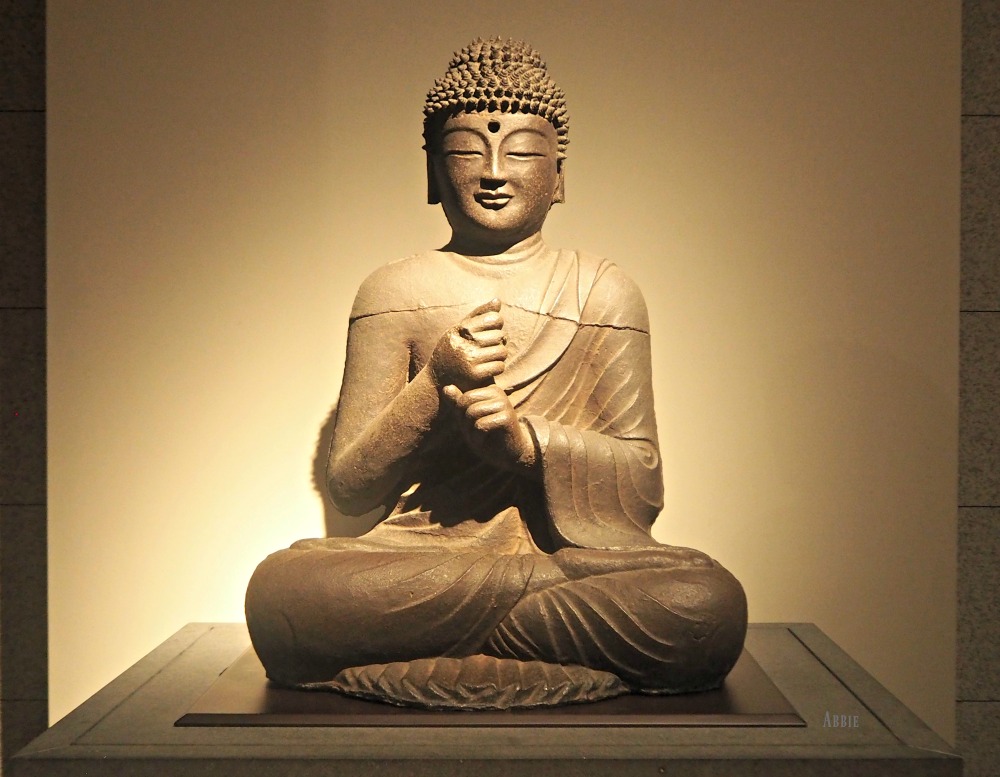 Iron Buddha statue of the Unified Silla Period (Korean National Museum)
Iron Buddha statue of the Unified Silla Period (Korean National Museum)dano festival (5th day 5th month)
Dano Festival is being celebrated during the Spring season when farmers begin to till their lands.
During this day, women wash their hair with special water mixed with Changpo (sweet flag). On the other hand, men carry around iris roots, which are believed to drive away evil spirits.
As the weather is getting warmer, people start giving fans to friends and neighbors to beat the heat.
Traditional games are played including Ssireum (Korean wrestling match), swing and others. Of course, merrymaking, eating, and drinking goes with this celebration.
yudu festival (6th month)
Yudu Festival is a celebration to drive away evil spirits and ghosts.
During Yudu day, people try and believe that by washing their hair in the creeks that flow towards the East would do the magic.
A big part of the ritual and celebration is offering freshly-harvested farm products to the farming god beseeching for a fruitful harvest. As you also learn, Koreans eat noodles this day believing that it will prolong life and live better.
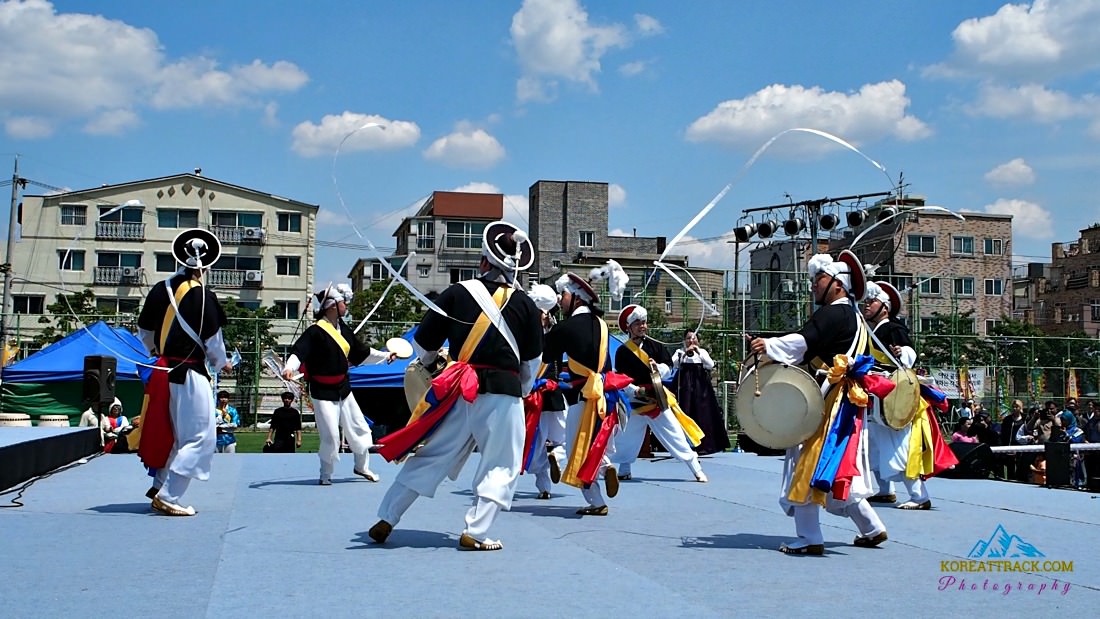 Festival dance performance at Gyeyang District
Festival dance performance at Gyeyang Districtsambok festival (6th day 7th month)
Sambok is traditionally experienced by Koreans as the hottest day of the summer season.
Aside from eating fresh fruits and other traditional food to beat the heat, Koreans eat a whole young cooked chicken called "Samgyetang."
Samgyetang is the most popular dish, and eating this dish seems being done by most Koreans, if not, by all. One of the most essential ingredients in Samgyetang is the famous Korean Ginseng.
MYTH: If you take a bath in a river on Sambok, you will become weak physically. There must be an explanation for this belief!
chilseok festival (7th day 7th month
During Chilseok, women perform a ritual (to Gyeonwoo and Jiknyeo) with vegetables and pickled fruits to make them better weavers. According to the folktale, Chilseok is for weaving activities of women.
While celebrating this day, people will eat Miljeonbyeon (wheat pancake), Milguksu (wheat noodles).
baekjung festival (7th month)
Baekjung is being celebrated when plentiful fruits and seeds are harvested. "Baek" means a hundred and "jung" means kinds (of grains and nuts).
Traditionally, farmers celebrate Baekjung right before harvest and offer rituals to farming gods for a great harvest.
Also, during Baekjung, masters give servants and workers a break and money to buy things and food. Some servants even get married during the celebration.
chuseok holiday (8th month)
Chuseok is a thanksgiving holiday for Koreans and one of the biggest and longest.
Chuseok takes place on the fifteenth day of the eighth lunar month during the full moon. It is a common practice among children to visit their hometowns or parents to offer respects and gifts.
Families usually go out to explore places, play games, eat delicious food, and spend their time together. Most often, this is the best time when children working in the big cities can visit their parents in the provinces.
Some traditional games that the young and old play include dancing, fan dance on a rope (more of a performance by an expert), tug-of-war, see-saw, Ssireum (Korean wrestling), arrow-shooting, among others.
To name but a few, Koreans prepare and eat a lot of traditional food including Songpyeon (traditional rice cake with grains and sweets), Torantang, vegetables, and Galbi (beef or pork ribs dish).
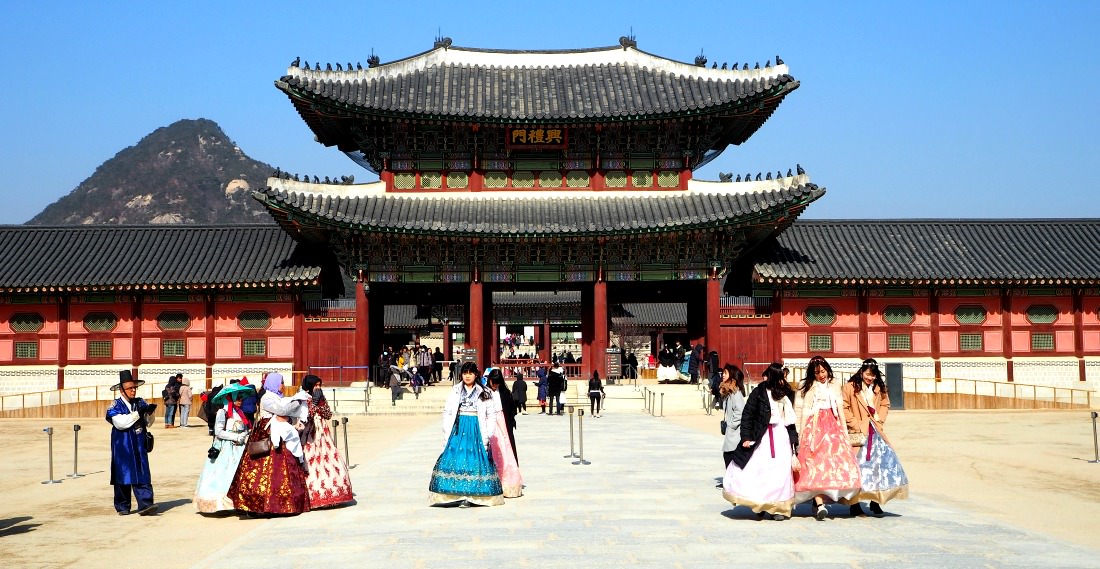 Visitors at Gyeongbukgong Palace wearing the traditional 'hanbok' clothing
Visitors at Gyeongbukgong Palace wearing the traditional 'hanbok' clothingJungu or Jungyangjeol (9th day 9th month)
Jungu or Jungyangjeol festival dates back to the Silla Dynasty when people enjoy the scenery of autumn season.
According to the ancient Korean numerology (called "jungyang"), two 9s are considered good or lucky numbers.
On this day, people would climb the mountaintops to view the colorful autumn leaves and enjoy eating traditional food such as Gukhwajeon (Chrysanthemum pancake).
sangdalgosa festival (10th month)
Sangdalgosa is a spiritual ritual for the gods of the house for peace and stability of the residents.
Traditionally, the family performs a ritual during which they coil a golden rope around their house while spreading red clay believing this will protect them from evil spirits.
Again, it is related to farming as the ritual and festivities are performed to thank the gods for prosperity and good harvest.
Foods are offered to the house gods in each room of the residents.
dongji ritual (11th month)
Dongji is the day of the year with the longest night and shortest day. Dongji marks the longer days and signals that the Spring season is coming.
Dongji means that a new year has commenced. On this day, people would eat Patjuk, red beans porridge. Patjuk is believed to drive away evil spirits as one welcomes the coming of the new year.
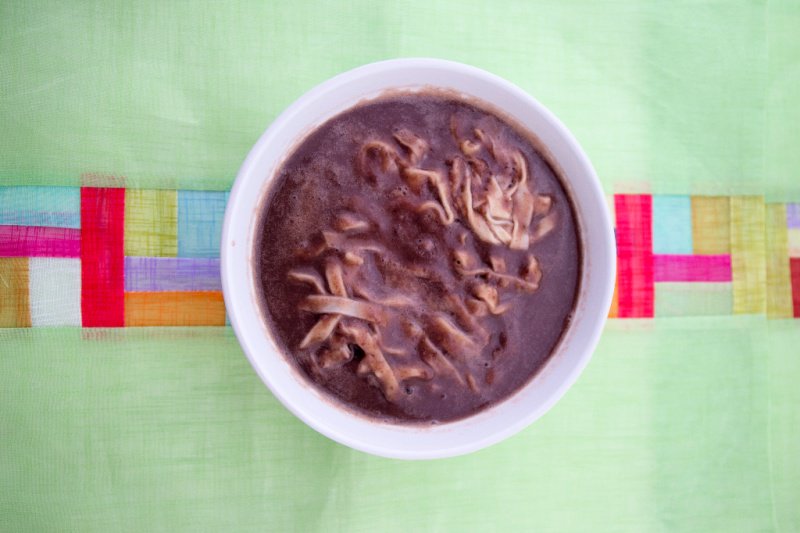 A bowl of 'patjuk' red beans porridge
A bowl of 'patjuk' red beans porridgeseotdal geumeum festival (12th month)
People celebrate the last day of the year by performing various activities.
People do this by driving away evil spirits in public offices and palaces by wearing masks and making noise using drums.
By driving away evil spirits, people also welcome a new and prosperous year ahead. Since the new year, or Seollal, comes the next day, people prepare food, clean the house, and dress up for the new year's day.
I hope you enjoy reading the Korean traditional festivals throughout the year.
Thanks for reading the article and hope to see you here again.
Get Exciting Activities
Book one of our exciting activities today to experience the thrill of a lifetime! Take advantage of this opportunity and secure your spot in advance.
Hotel Map Guide
Find your affordable, accessible, and comfortable hotel in Seoul at Agoda.Com. See the hotel map below...
Hotel Booking Guide
Find affordable and amazing hotels on Agoda.com using the search box below. Book now to enjoy great discounts and save!
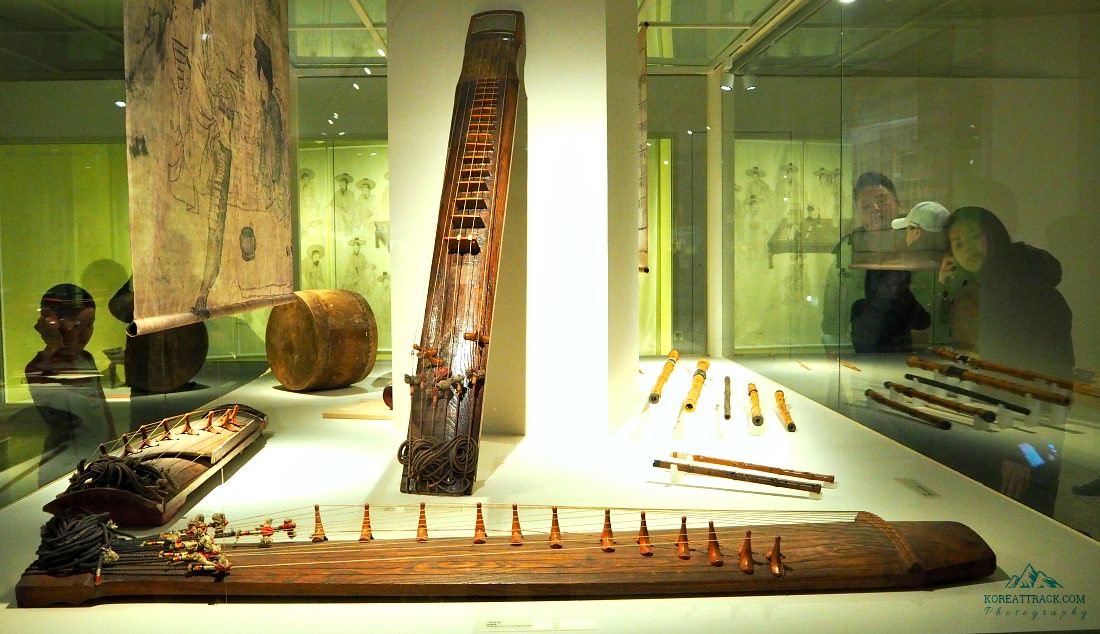
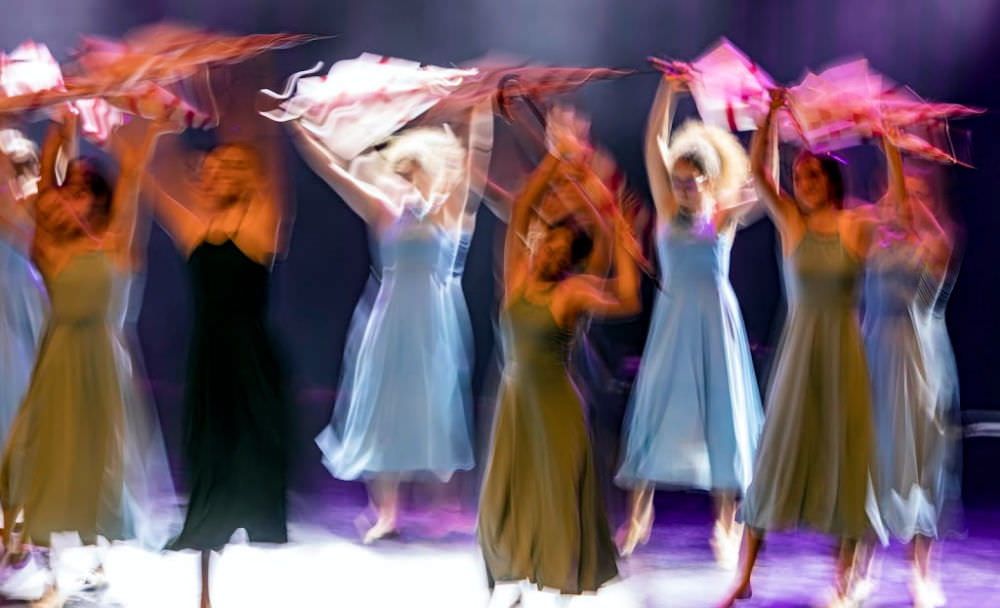
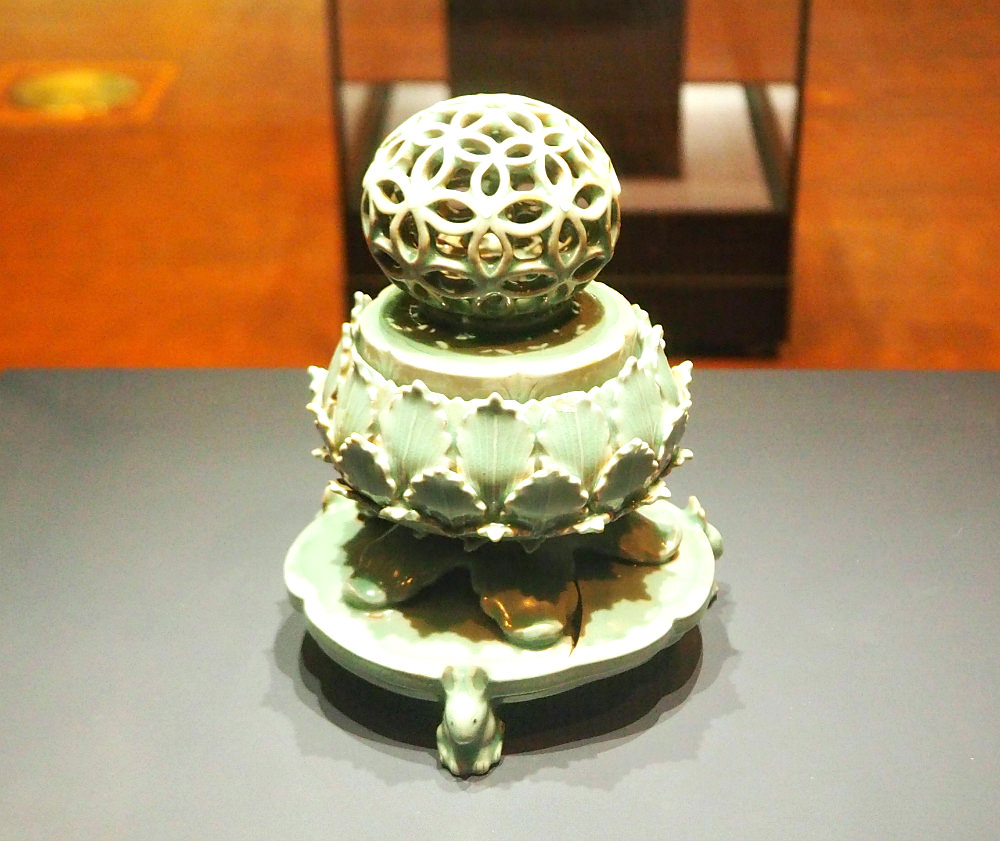




New! Comments
What do you think about this page? Leave me a comment in the box below.